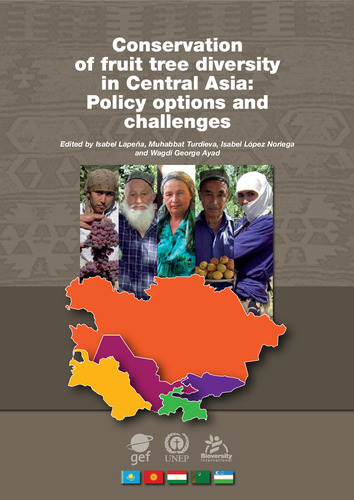Conservation of fruit tree diversity in Central Asia: policy options and challenges
Central Asia is one of the most important centres of origin for temperate fruit species, and enjoys very rich specific and intraspecific diversity of fruit trees. Apple, apricot, peach, pear, plum, grape, almond, pistachio, pomegranate, and fig are among the best known crops cultivated in the region, where the diverse and extreme natural and climatic conditions have helped farmers produce varieties adaptable to drought and resistant to a number of environmental stress factors. However, major changes in the rural economies in Central Asia, after the break-up of the former Soviet Union in 1991, have contributed to exacerbating some of the threats to agricultural biodiversity. From 2005 to 2010, the United Nations environment Programme (UNEP) with the Global environmental Fund (GEF) supported a project coordinated by Bioversity International to understand “In situ/on-farm Conservation and Use of Agricultural Biodiversity in Central Asia”. The project analyzed existent legislation and policies in the region to identify gaps and provide options to policymakers for strengthening legal and policy frameworks that support the conservation of horticultural and wild fruit species genetic diversity. This publication summarizes the factors that threaten local diversity of fruit and horticultural crops in 5 focal countries, and outlines the measures that can be adopted to develop and implement policy and legislative frameworks that better serve conservation goals.

